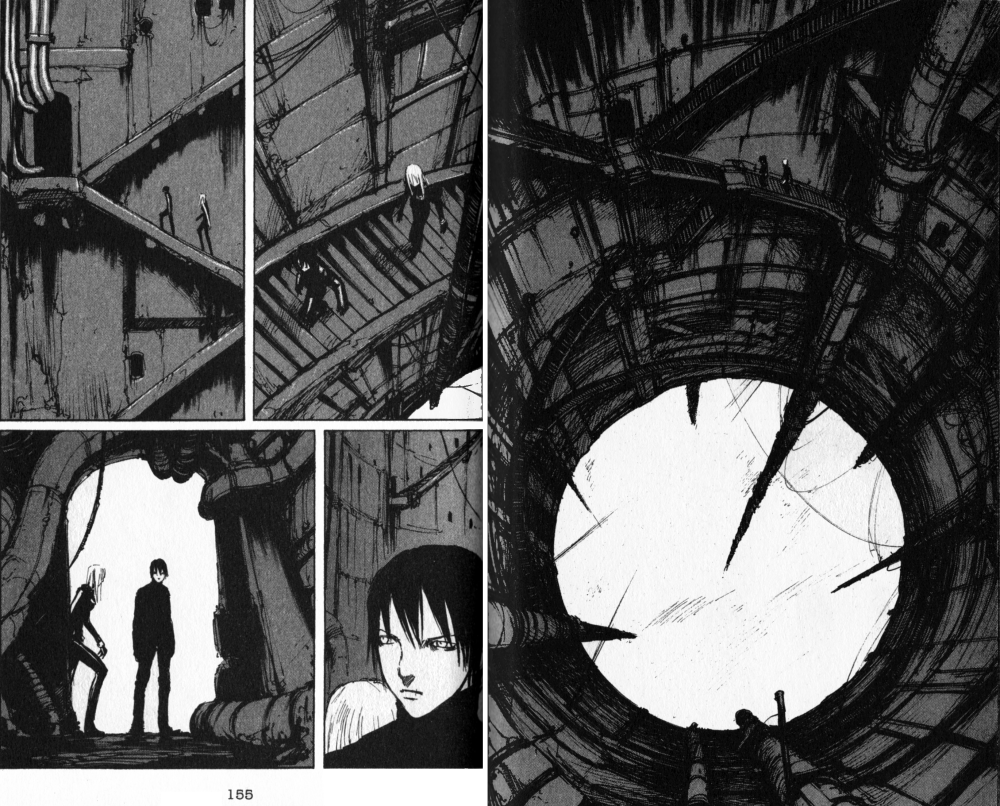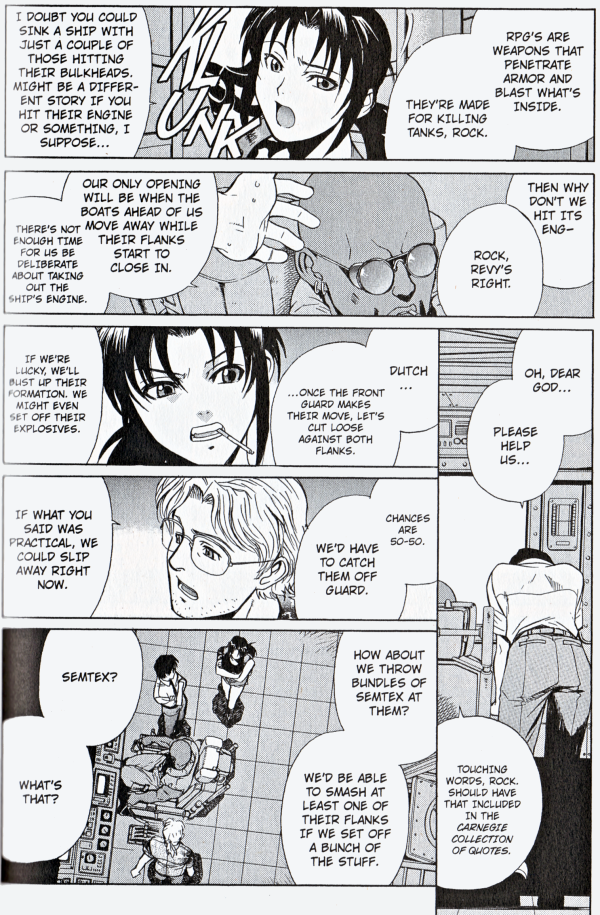MICHELLE: Welcome to the third installment of Let’s Get Visual, a monthly column with Manga Bookshelf‘s MJ in which we flex our artistic muscles!
Although it’s not our intent to have specific themes for each column, we do like responding to requests! Last month, as suggested by a reader, we devoted our column to action scenes. This month, inspired by a comment from Livejournal user Salimbol, we’ve picked scenes that excel in nonverbal communication. I will say right up front that my choice is very, very simple, but it was a scene that left a lasting impression nonetheless. (Click on images to enlarge.)
Kimi ni Todoke: From Me to You, Volume 3, Pages 81-82 (VIZ Media)

MJ: So, what do you particularly like about these pages?
MICHELLE: Maybe it’s the simplicity I like best, actually. I don’t even need to give any context about the manga for anyone to be able to tell the following:
1. Boy sees Girl #1.
2. Girl #1 is oblivious.
3. Boy watches her with a look of warm affection.
4. Girl #2 watches Boy watching Girl #1 and does not like what she sees.
It’s so simple, I wonder if its meant to emphasize the purity and clarity of the feelings the characters share and from which this would-be rival is destined to be forever excluded.
MJ: Well, I think it’s an important moment for Girl #2. She’s watching a boy she likes watch another girl with such unguarded affection. He’s doesn’t even seem to realize or care that she’s still there watching him, he’s so wrapped up in the pure joy of watching the other girl. It’s significant, I think, that the final panels turn the focus back on Girl #2 and what she’s feeling, because this scene really is a revelation for her. I’d almost feel sorry for her if I hadn’t read the book. 😀
MICHELLE: Yeah, me too! I love, also, that the boy radiates almost a sense of peace as he looks upon Girl #1. Even watching her do little things like water plants or practice her kicking skills on a rock brings him joy. It’s scenes like these that make Kimi ni Todoke such a warm and cozy read, I think.
MJ: You’re absolutely right. Also, the artist is so skillful here, I think she could have even left out the final, dreamy image of Girl #1 in the boy’s mind’s eye, and we still would have seen it in our own heads, it’s so clear what he’s thinking of. It’s easy to dismiss the craft in a comic that’s primarily known for being warm and sweet, but that would be such a mistake here. This whole sequence is just really well done.
MICHELLE: And the memory of it stayed with me. It’s been five months since I read this volume, but it was the first thing I thought of when the topic of nonverbal communication was suggested.
The second thing I thought of is what you ended up choosing, interestingly enough!
MJ: Shall I introduce that, then?
MICHELLE: Go for it!
Antique Bakery, Volume 4, Pages 116-120 (Digital Manga Publishing)

MJ: Okay, well, the scene is from Fumi Yoshinaga’s Antique Bakery. One of the traits I associate most with her as an artist is her use of silent panels, and this is the one that first came to my mind when you mentioned Salimbol’s request. It’s a scene between the story’s two main characters that is revisited multiple times throughout the manga. It’s really the beginning of their history together, despite the fact that it’s quite far in the past from when the main action of the story is set. This is one of its final appearances in the series, late in the fourth volume.
To help illustrate how effective I think the visual storytelling is in this scene, I’ve actually provided scans from the Japanese version of the series. Even without being able to read the small amount of dialogue here, and despite how important the first bit of dialogue is to the history of these characters, I think the emotional trajectory of the scene is crystal clear.
Boy #1 says something emphatic to Boy #2. Boy #2 is visibly upset, and though he attempts to maintain his composure, he eventually breaks down and flees the scene. Boy #1 ponders what he’s done, finally succumbing to deep regret .
What Yoshinaga captures so well is subtlety of emotion and the agony of time. The progression of the characters’ expressions during this sequence are almost painfully slow, placing the reader in the same sort of stopped-time state each of the boys is experiencing—that sense of being frozen in one time and place that only happens in moments of deeply negative emotion. Nobody gets off easy, especially Boy #1, who is stuck living with the consequences of his actions long after Boy #2 has escaped from the moment. The art is so simple, but the effect is chilling.
MICHELLE: I positively adore the phrase “the agony of time.” Yoshinaga uses repeated sequences of panels quite a lot, and while this one is painful, I can recall others that cycle through surprise, thoughtfulness, and then smiling acceptance. It’s a technique that’s very versatile!
Here, I find myself struck by the third and fourth pages particularly, particularly as regards where Boy #1 is placed on the page. The third page emphasizes how very alone he now is, after driving off his companion, and the fourth places him very low on the page. I wonder if this last reflects his opinion of himself, after he has treated his classmate so shabbily.
MJ: I wondered that as well! And yes, the empty space that’s left in the wake of Boy #2’s departure is significant in terms of how we experience the scene and the state of mind Boy #1 has been left in. Though our sympathy, of course, goes out naturally to Boy #2, it’s hard not to be moved by Boy #1’s obvious regret. As a reader, I want to somehow reach into the page and compel him to go after Boy #2, which adds a bit of frustration to the mix as well.
MICHELLE: Yes, this definitely emphasizes how stuck he is, both physically and mentally. And will continue to be, even after he moves from this spot, as the story makes clear that Boy #2 has moved on from this moment but Boy #1 has never been able to quite forgive himself for it.
MJ: It’s really quite brilliant, the way she tells the stories of these two men, isn’t it?
MICHELLE: It really is. I suspect “Yoshinaga” is actually just a synonym for “brilliant.”
MJ: I really don’t know what to say after that. 🙂
MICHELLE: Maybe we should take our cue from these artists and know when to remain silent!
That’s it for this month’s Let’s Get Visual. Thank you for joining us and, as always, please feel free to share your personal opinions on these pages in the comments!





























Recent Comments